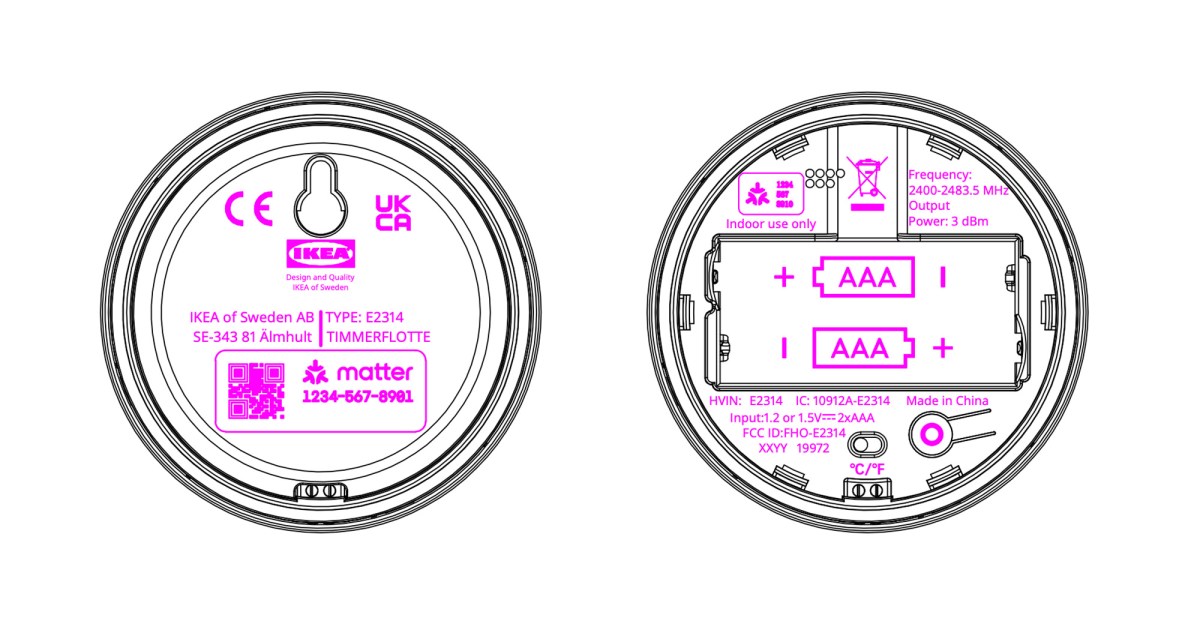Inside Ikea’s Innovative Leap: The FCC Registration of a Game-Changing Temperature Sensor
Ikea is making significant strides in the realm of smart home technology with its recent FCC registration of a Matter-over-Thread temperature sensor. This innovative leap not only showcases Ikea’s commitment to enhancing home automation but also positions the company as a leader in integrating comfort with intelligent technology. As we delve deeper into this development, we’ll explore what this sensor entails, its potential impact on smart home ecosystems, and what it means for consumers looking to elevate their living environments.
The Rise of Smart Home Technology
In recent years, the smart home technology market has exploded, driven by consumers’ desire for convenience, efficiency, and comfort. With devices ranging from smart lights to advanced security systems, the integration of these technologies into everyday life helps streamline home management. According to a report by Fortune Business Insights, the global smart home market is projected to reach over $400 billion by 2027, highlighting the growing interest and investment in this sector.
The introduction of Ikea’s temperature sensor is a timely addition to this expanding market. With its Matter-over-Thread capability, this sensor promises seamless compatibility with a variety of smart devices, enhancing its utility and user experience. But what exactly does this mean for consumers?
Understanding Matter-over-Thread Technology
To appreciate the significance of Ikea’s new temperature sensor, it’s essential to understand what Matter-over-Thread technology entails. Matter, a connectivity standard developed by the Connectivity Standards Alliance (CSA), aims to unify smart home devices across different platforms. Thread, on the other hand, is a low-power wireless protocol that provides a secure and reliable mesh network.
By combining these technologies, Ikea is offering a solution that not only simplifies the connectivity of smart home devices but also enhances their reliability. This means that homeowners can expect their devices to work harmoniously, regardless of the brand or platform, ultimately leading to a more cohesive smart home experience.
What the Temperature Sensor Offers
The newly registered temperature sensor from Ikea promises to provide several benefits:
- Real-time Monitoring: The sensor continuously monitors ambient temperature, providing users with accurate data to optimize comfort settings throughout the home.
- Energy Efficiency: By integrating the sensor with smart thermostats and HVAC systems, homeowners can reduce energy consumption, leading to cost savings on utility bills.
- Automated Adjustments: The sensor can trigger automatic adjustments in heating or cooling systems based on real-time temperature readings, ensuring a comfortable living environment at all times.
- Enhanced Control: Users can access data and control settings remotely through associated apps, allowing for greater flexibility, especially when away from home.
These features are not just about luxury; they represent a significant shift towards sustainability and energy efficiency, which are becoming increasingly important to consumers today.
The Implications for Home Automation
With the introduction of Ikea’s Matter-over-Thread temperature sensor, the landscape of home automation is set to change dramatically. Here’s how:
- Interoperability: The integration of Matter means that this temperature sensor will work seamlessly with other smart devices, including lights, security systems, and appliances. This interoperability encourages users to expand their smart home setups without worrying about compatibility issues.
- Scalability: As more devices adopt the Matter standard, users can easily add new components to their smart home without the hassle of reintegrating or reconfiguring existing systems.
- Increased Adoption: Ikea’s entry into the smart sensor market could inspire other companies to innovate further, leading to more advanced and affordable smart home solutions.
Consumer Insights: The Demand for Smart Solutions
Consumer demand for smart home devices is not solely driven by technological trends; it is also influenced by changing lifestyle needs. A recent survey conducted by Statista revealed that 60% of consumers are interested in smart home technology for its ability to enhance convenience, while 45% cited energy efficiency as a crucial factor in their purchasing decisions.
As people look to create more comfortable living spaces, the appeal of Ikea’s temperature sensor lies in its ability to blend seamlessly into existing home ecosystems. Whether you are a tech-savvy enthusiast or a newcomer to smart home technology, the user-friendly design and intuitive functionality of Ikea’s products make them accessible to a broad audience.
The Future of Smart Home Automation with Ikea
Ikea’s innovative leap into the smart home technology sector with its FCC-registered temperature sensor marks a significant milestone. As the company continues to push the boundaries of home automation, we can expect to see further advancements that prioritize user experience, energy efficiency, and seamless integration.
Moreover, the adoption of Matter-over-Thread technology is likely to accelerate the development of more sophisticated smart home systems. Consumers can look forward to a future where their home environments are not only more comfortable but also smarter and more efficient.
Conclusion
Ikea’s foray into smart home technology with the introduction of a Matter-over-Thread temperature sensor is a promising development in the world of home automation. By focusing on interoperability, user experience, and energy efficiency, Ikea is setting the stage for a new era of smart living. As we embrace these innovations, the potential for enhanced comfort and greater control over our home environments becomes increasingly attainable.
This innovative leap not only simplifies the management of our living spaces but also empowers consumers to create tailored environments that meet their specific needs. As Ikea continues to innovate, the future of smart home technology looks bright, paving the way for a more comfortable, efficient, and connected lifestyle.
See more Future Tech Daily

